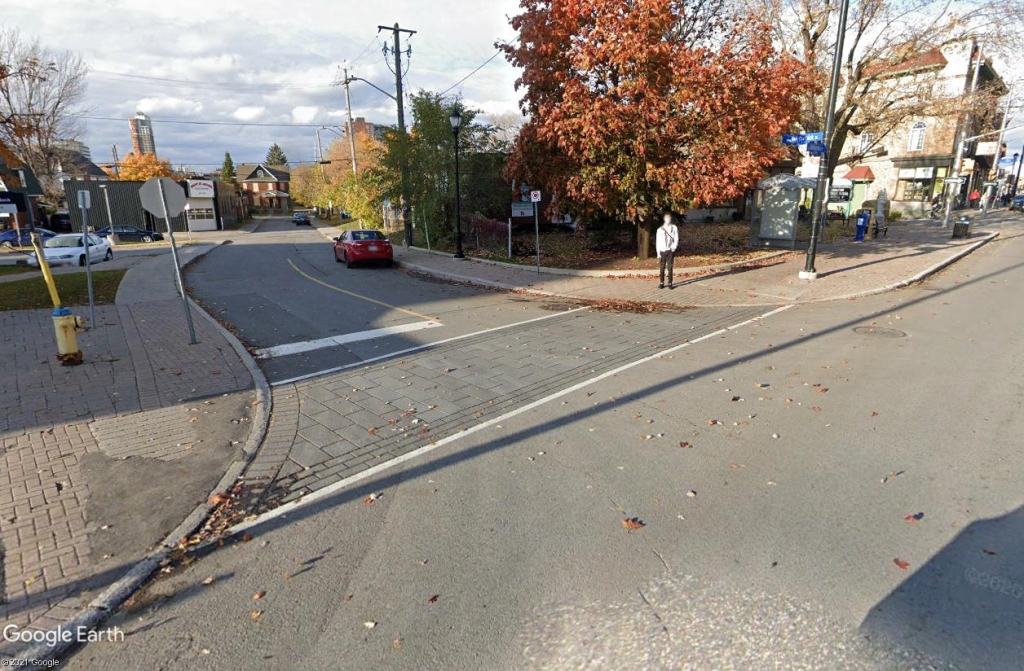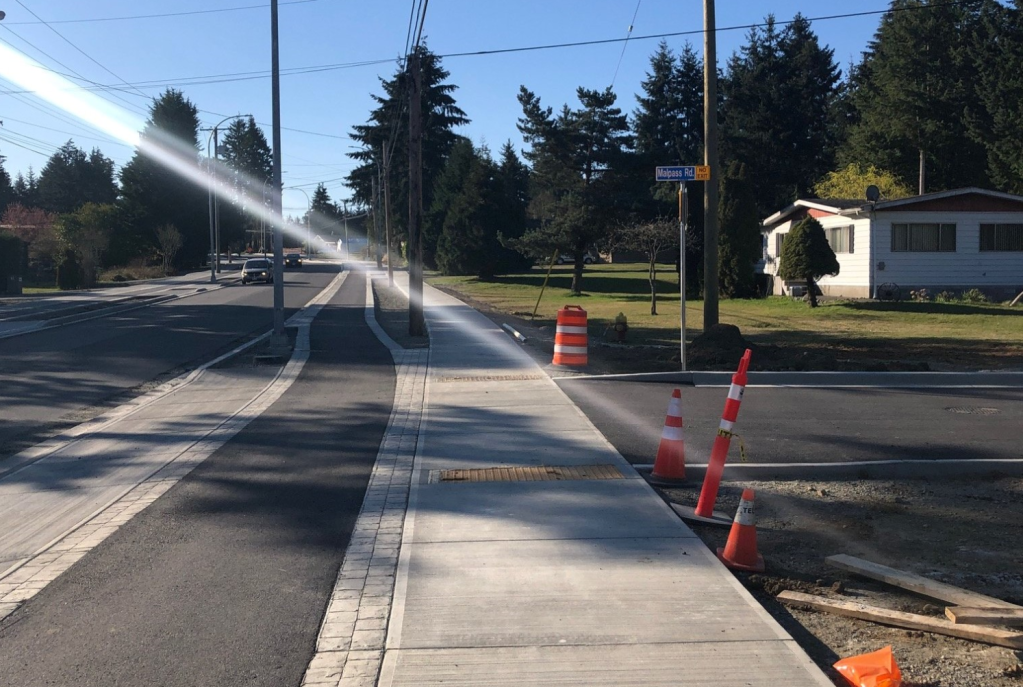Continuous sidewalks centre the pedestrian experience in street design. No longer are pedestrians interrupted at every block to look both ways; instead the onus is shifted onto motorists who become guests in pedestrian space.
Sidewalks are a place where many activities happen: talking with a friend, playing a game on your phone, walking to a store. They are a precious place on our streets where people can simply exist, free of stress from traffic. Inevitably though, a sidewalk will meet a side street. On more walkable main streets, this happens more often, as frequently as 50-80 metres. That means as frequently as every 20 seconds, people walking are required to be alert for turning vehicles, look both ways, and make sure they have been seen by motorists.
At the most basic level, it’s important that we make these crossings safe. But on walkable main streets, this is not enough: we must focus on creating a pleasurable walking experience. When we interrupt people so frequently, we are doing a disservice to this objective.
This post will discuss design options for the specific situation of a main street sidewalk crossing a side street, where pedestrians always have the legal right of way and motorists on the side street must stop or yield every time. This post will not discuss signalized intersections, where right-of-way changes with the signal.
Parallel White Lines
The most basic treatment pedestrians can be provided at a side street crossing are two white lines, spaced at least 2.5 metres apart – the minimum requirement to designate a crosswalk that gives pedestrians legal right of way over motor vehicles (in the province of Ontario, at least). These provide a basic level of guidance to pedestrians, but do very little otherwise to improve the quality of the crossing – for a person walking, it very much sends a message that you are a “visitor” on space otherwise reserved for vehicles.

Enhanced Crosswalks
The easiest way to improve on the basic design is to add features to improve its visibility. Options include using coloured concrete or pavers (shown below) or “zebra” painted crosswalks. This helps increase the conspicuity of the crossing to both people walking and people driving. Still though, a sidewalk user must ramp down to reach the roadway and cross a curb, creating extra effort for people using mobility aids. The bottom of a sidewalk ramp is also a common place for water to pool when it rains, leading to wet feet.

Raised Crosswalks
Raised crosswalks combine the high-visibility treatment with a speed hump, ensuring that not only will motorists see the crosswalk, they will slow down when they cross it. Pedestrians with physical impairments benefit too, as they experience less of a slope down to the crossing and then back up on the other side. Whereas standard crosswalks are at road level and susceptible to collecting puddles, raised crosswalks ensure that water will gather elsewhere when it rains, helping to ensure a puddle-free experience for people walking.

Continuous Sidewalks
While the above treatments have become progressively better at improving safety, they all still send a clear message of “crosswalks”, that is, a space where a pedestrian is temporarily permitted to travel through motor vehicle space. This requires caution and attention and creates stress, especially among people with reduced stamina.
Continuous sidewalks flip that relationship on its head, creating a design where the pedestrian realm is continuous, and turning motorists must temporarily cross through pedestrian space. Aside from tactile warnings on either side of the crossing for visually-impaired people, continuous sidewalks look exactly as they would if the intersecting roadway were not there at all: the concrete sidewalk and roadway curb continues through the crossing, and pedestrians stay at the same level. Motorists cross a ramped curb on either side with a corner radius that is intentionally not defined, creating the feeling of driving through a pedestrian plaza, requiring focus and attention.

There are many designs that come close to achieving “continuous sidewalk” status, but don’t quite make it. For a design to truly be a continuous sidewalk (in this author’s opinion), it needs to have the following features:
- Sidewalk material does not change, and continues straight across the intersection without a change in level
- Roadway curb continues parallel to the street, resulting in no defined turning path for motor vehicles (the only change is that the curb profile changes to become mountable)
- On either side, the roadway ramps up to the crossing, helping to slow approaching and turning motorists

Continuous sidewalks centre the pedestrian experience in roadway design. No longer are people walking interrupted a few times every minute to look both ways; instead the onus is shifted onto the motorists who become guests in pedestrian space.
What about Liability?
Liability may be the top reason why continuous sidewalks have not become widespread in North America (despite being common practice in the Netherlands, a leading nation in road safety, see image below). North American society has spent decades reinforcing the message that road safety is a shared responsibility of all users, that pedestrians must remain vigilant at all times, and any behaviour that detracts from that (such as texting and walking) should be shamed and punished. The first three sidewalk treatments fit that philosophy, maintaining a crossing environment that clearly tells pedestrians they are temporarily travelling through what is otherwise vehicle space.

Continuous sidewalks contradict that message, instead using design to create an environment for people walking that draws little attention to the crossing, allowing them to focus on other things. They require a certain degree of confidence that motorists will truly take on the bulk of the responsibility (if you design it right, they will).
The sidewalk does not need to end at side streets, and “crosswalks” need not be the only tool for giving people walking the right of way at these crossings. If we truly wish to prioritize people in the design of side street crossings, continuous sidewalks are a leading option.
Special thanks to engineer Roy Symons, whose work has provided the inspiration for this post. Check out Roy’s more technical discussion on continuous sidewalks on his blog. Also thanks to Not Just Bikes for their excellent video summarizing the use of continuous sidewalks in the Netherlands. For a much more thorough discussion of the topic and the details of the design, check out Robert Weetman’s discussion on continuous sidewalks in the UK context.


5 Comments